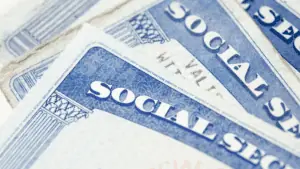Last week I came across a headline online about the return of teen spending, according to a study by an investment bank called Piper Sandler. They just conducted their 40th semi-annual “Taking Stock With Teens” survey of Generation Z teenagers and made this declaration in big letters. I chuckled and thought to myself “Yeah, I knew that already.” With Maeve now twenty years old and Phoebe and Sophie just turning eighteen, I’ve seen first-hand how their spending has made a major comeback this year. From buying “cool” clothes, almost-weekly trips to Mashpee Commons and the return of iced coffee runs, they’re definitely making up for those months of essential “lockdown” caused by the pandemic. As both a guy who knows quite a bit about personal finance and a father, my hope is that they be prudent and thoughtful in their purchases, yet at the same time I’m happy to see a return to normal life, pre-COVID.
But this shift has more meaning than just happy Cutter girls. In fact, this uptick in teen spending is important to the economy and the companies that rely on their purchases to stay afloat. These days teenagers make up a significant portion of the spending population and should not be overlooked. And one of the factors that make teen spending possible is their available discretionary income.
Discretionary income is of vital importance to companies, who are interested in discretionary income levels of consumers in various geographic areas, age brackets, and socioeconomic backgrounds. Why? Well, because consumers with larger amounts are more likely to spend their money on the goods and services they provide. And teenage and young adult consumers have considerable sums of discretionary income—and are thus highly valued by companies—because they are more likely to have their living costs paid for by other individuals (typically parents) and they are less likely to be supporting a family.
Now stepping back for a minute to the pandemic – it affected pretty much everyone financially, and teens were no exception. Many teens were laid off or furloughed from their jobs, so their discretionary income took a big hit. (Nearly 23% of teens say their ability to work part-time was affected by the pandemic). According to the Piper Sandler survey, teenagers reported spending at an all-time survey low of $2,150 between Aug. 19 and Sept. 22, 2020. That’s down 9% from $2,371 spent in 2019, the survey says. Yearly reported spending by teens peaked in spring 2006 at $3,023, the data shows.
With dining options limited in the stay-at-home era, food spending also slid. Still, both male and female teens managed to spend 21% of their overall money on meals, often via drive-through and delivery. It’s no surprise to me to hear that Chick-fil-A was teens’ favorite restaurant (a favorite at my house!). In fact, Chick-fil-A overtook Starbucks as the top restaurant for teenagers₁.
But teens, and teen girls in particular, are spending again. That’s one of the key findings of the Piper Sandler’s survey. Female teens spent 9% more on clothing than a year earlier, the biggest gain since 2015. Clothing, skincare and handbags all saw increases, while male spending on clothing fell by 15%. Heck, it is like Christmas every day at the Cutter’s with Amazon Prime!
According to Erin Murphy, a Piper Sandler senior research analyst, “We are seeing a female-led spending recovery with upticks in spending on clothing, handbags and skincare in particular.”
And according to the survey, teens are more conscious consumers, too, with many of them paying attention to bigger issues. The environment ranks as the top political and social issue followed by immigration and gun control rounding out the top three. Some of the quotes featured from the teens on the issues include:
- “The burning of the Amazon rainforests.”
- “People throwing away plastic and not recycling.”
- “The planet is not a trash can.”
On immigration, the teens expressed their concern about “how unfairly immigrants are being treated” and that “kids [are] being taken away from their parents at the border.”
Whatever your political or social beliefs may be, the fact remains that teens are and will remain an important part of our economy’s post-COVID recovery. As summer lets out and teens return to work – some perhaps even full-time – we can expect to see discretionary income continue to rise. And this will most likely translate to an increased upward trend in teen spending. So, the next time your teen child or grandchild comes home with arm full of shopping bags, just remember they’re doing their part, too!
And as always – be vigilant and stay alert, because you deserve more!
Have a great week.
Jeff Cutter, CPA/PFS is President of Cutter Financial Group, LLC, an SEC Registered Investment Advisor with offices in Falmouth, Duxbury, Mansfield. Jeff can be reached at jeff@cutterfinancialgroup.com.
This article is intended to provide general information. It is not intended to offer or deliver investment advice in any way. Information regarding investment services is provided solely to gain a better understanding of the subject of the article. Different types of investments involve varying degrees of risk. Therefore, it should not be assumed that future performance of any specific investment or investment strategy will be profitable. Market data and other cited or linked-to content in this article is based on generally-available information and is believed to be reliable. Cutter Financial does not guarantee the performance of any investment or the accuracy of the information contained in this article. Cutter Financial will provide all prospective clients with a copy of Cutter Financial’s Form ADV 2A and applicable Form ADV 2Bs. Please contact us to request a free copy via .pdf or hardcopy. Insurance instruments offered through CutterInsure, Inc. 1. https://tinyurl.com/42kdby28 2. https://tinyurl.com/d67arpbt








